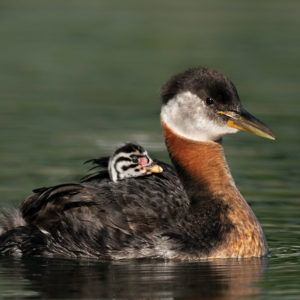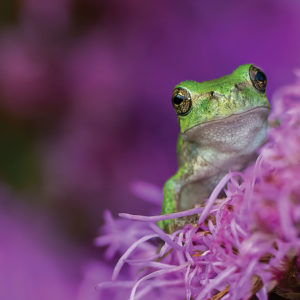Our Country’s Big Cat: Meet the Canadian Lynx
As we grow accustomed to this period of self-isolation, it seems fitting that our March calendar image features one of Canada’s strong, solitary creatures: the Canadian lynx.
This big cat may look like a larger version of your beloved house pet, but don’t be fooled! Canadian lynx are fierce and wild, and can be found roaming in boreal forest ecosystems across the country. Here are a few facts you may not know about this beautiful species.
They Get Dressed Up for Winter
Canadian lynx have no choice but to bundle up in the winter, just like the rest of us.
During the summer, a lynx’s coat is short, light brown, and not overly dense. In the winter, however, their fur becomes thicker, longer, and they grow a grey-coloured coat. Canadian lynx also have built-in snowshoes that help them get through the long winter: wide paws distribute weight and allow them to step effortlessly over the snow.
Similar to humans, Canadian lynx want a comfortable home, especially in the frigid winter months. The species is very protective of its territory, and Canadian lynx live in forested areas where they can create habitats beneath fallen trees, tree stumps, thick bushes, and rock ledges.
They’re Creatures of the Night
Canadian lynx hunt as the rest of us sleep. In fact, it’s rare to see this big cat at all since they prowl at night in order to avoid contact with humans and other animal species. There’s also less competition during the hours of darkness and their prey is more vulnerable. Canadian lynx have large eyes and excellent hearing, and it’s these features that aid them in snagging their prey.
Snowshoe hares are their main food source. So intertwined is this food chain that when the snowshoe hare population declines, so too does the Canadian lynx population. If they are unable to find their preferred menu item, Canadian lynx will opt for smaller animals such as birds and meadow voles. Sometimes they’ll even attack larger mammals like caribou and deer.
Canadian lynx are not particularly fast despite their long legs. Instead, they rely on the element of surprise. They find a place to hide and wait for their kill, sometimes sitting for hours waiting for the right moment. Their patience is inspiring, especially at a time like this!
Though Canadian lynx are skilled hunters, they face many threats that are outside of their control, namely loss of habitat and urbanization. Protecting Canada’s forests will allow these beautiful big cats the space to live and hunt, and offer a spot for us to continue our solitary walks and wanders, too.
Nature Canada thanks the frontline medical workers for their efforts during this time. We follow the advice of the World Health Organization and Health Canada. Please visit these two websites for the latest information on how to protect you and your family from COVID-19.
Nature is also important to our health and well-being and we hope you’ll consider supporting our efforts to save nature. Thank you for caring!
Yours in nature, the Nature Canada team.



